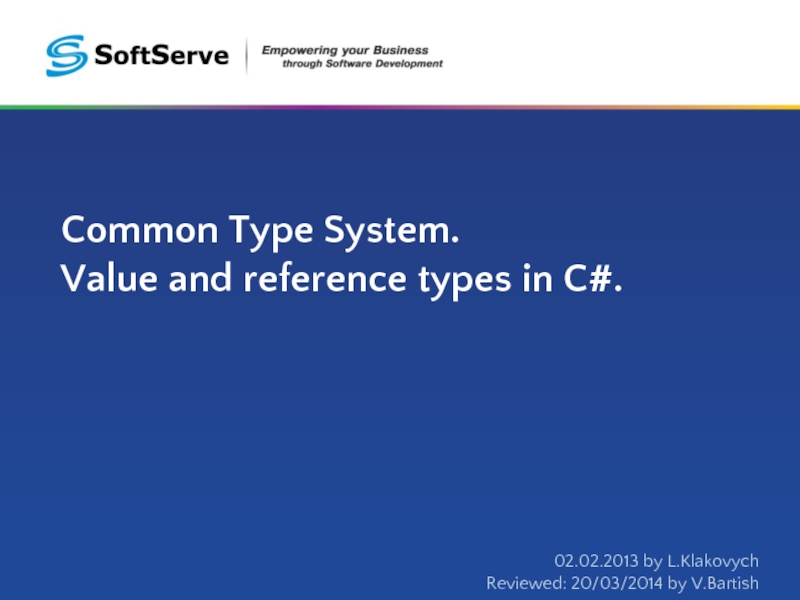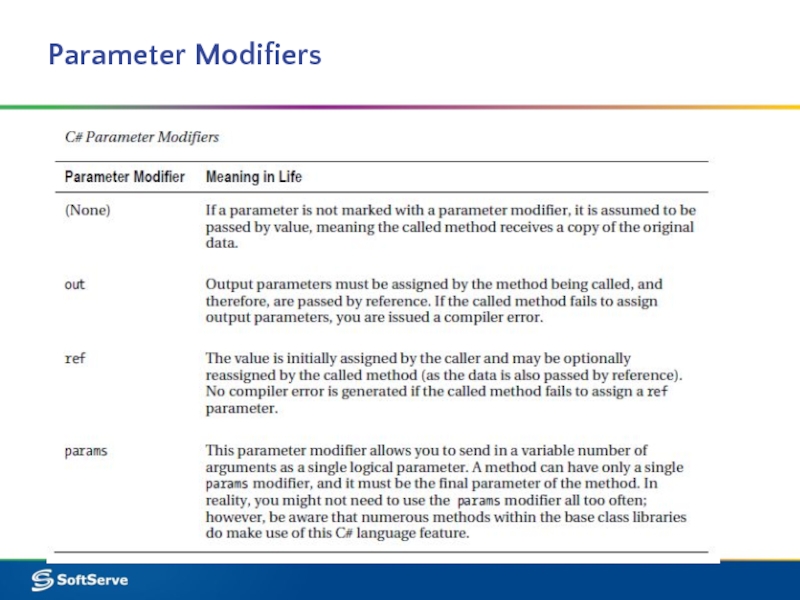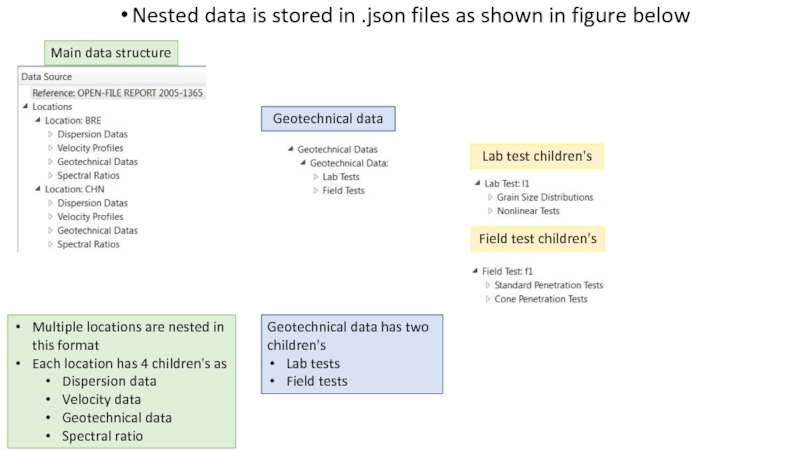- Главная
- Разное
- Дизайн
- Бизнес и предпринимательство
- Аналитика
- Образование
- Развлечения
- Красота и здоровье
- Финансы
- Государство
- Путешествия
- Спорт
- Недвижимость
- Армия
- Графика
- Культурология
- Еда и кулинария
- Лингвистика
- Английский язык
- Астрономия
- Алгебра
- Биология
- География
- Детские презентации
- Информатика
- История
- Литература
- Маркетинг
- Математика
- Медицина
- Менеджмент
- Музыка
- МХК
- Немецкий язык
- ОБЖ
- Обществознание
- Окружающий мир
- Педагогика
- Русский язык
- Технология
- Физика
- Философия
- Химия
- Шаблоны, картинки для презентаций
- Экология
- Экономика
- Юриспруденция
Common Type System. Value and reference types in C# презентация
Содержание
- 1. Common Type System. Value and reference types in C#
- 2. AGENDA Common Type System Data Type Class
- 3. Common Type System CTS – common type
- 4. The Data Type Class Hierarchy A globally
- 5. Base class Object Equals() is used to
- 6. Intrinsic Data Types
- 7. Variable Declaration and Initialization It is a
- 8. Variable Declaration and Initialization
- 9. Implicitly Typed Local Variables
- 10. C# Nullable Types In C#, the ?
- 11. C# Nullable Types and operator ??
- 12. Value and Reference Types
- 13. Value and Reference Types
- 14. Value and References Types, Assignment Operator
- 15. Parameter Modifiers
- 16. Passing Reference Types by Value and by Reference
- 17. Shallow and deep copy If you have
- 18. References MSDN:Common Type System Built-in Data Types Value and Reference Types Object class
- 19. Questions ?
Слайд 1Common Type System.
Value and reference types in C#.
02.02.2013 by L.Klakovych
Reviewed:
Слайд 2AGENDA
Common Type System
Data Type Class Hierarchy
class Object
Intrinsic Data Types
Variable Declaration and
Implicitly Typed Local Variables
C# Nullable Types. ?? Operator
Value and Reference Types
Shallow and deep copy
Слайд 3Common Type System
CTS – common type sestem:
defines how types are declared,
is an important part of the runtime's support for cross-language integration.
CTS performs the following functions:
Establishes a framework that helps enable cross-language integration, type safety, and high-performance code execution.
Provides an object-oriented model that
supports the complete implementation
of many programming languages.
Defines rules that languages must follow,
which helps ensure that objects written in
different languages can interact with each
other.
Provides a library that contains the
primitive data types
( Boolean, Byte, Char, Int32, and UInt64)
Слайд 4The Data Type Class Hierarchy
A globally unique identifier (GUID ) is
Слайд 5Base class Object
Equals() is used to compare object references, not the
GetHashCode() returns an int that identifies a specific object instance.
ToString() returns a string representation of this object - fully qualified name
MemberwiseClone() creates a shallow copy by creating a new object, and then copying the nonstatic fields of the current object to the new object. If a field is a reference type, the reference is copied but the referred object is not;
Слайд 7Variable Declaration and Initialization
It is a compiler error to make use
All intrinsic data types support a default constructor. We can create a variable using the new keyword, which automatically sets the variable to its default value:
• bool variables are set to false.
• Numeric data is set to 0 (or 0.0 in the case of floating-point data types).
• char variables are set to a single empty character.
• BigInteger variables are set to 0. (from System.Numerics.dll)
• DateTime variables are set to 1/1/0001 12:00:00 AM.
• Object references (including strings) are set to null.
Слайд 8Variable Declaration and Initialization
It is more cumbersome to use the new
Слайд 10C# Nullable Types
In C#, the ? suffix notation is a shorthand
Слайд 11C# Nullable Types and operator ??
?? Operator allows you to assign
Слайд 17Shallow and deep copy
If you have a class or structure that
If you have a custom type that maintains other reference types, you might want to create a new object that takes into account each reference type member variable, in order to get a “deep copy.”
public class Point : ICloneable
{
private int x, y;
public object Clone()
{ return this.MemberwiseClone(); }
}
public class Rectangle: ICloneable{
public object Clone()
{
// First get a shallow copy.
Rectangle newRect =
(Rectangle)this.MemberwiseClone();
// Then fill in the gaps.
newRect.P1 = (Point)this.P1.Clone();
//…
return newRect;
}
























